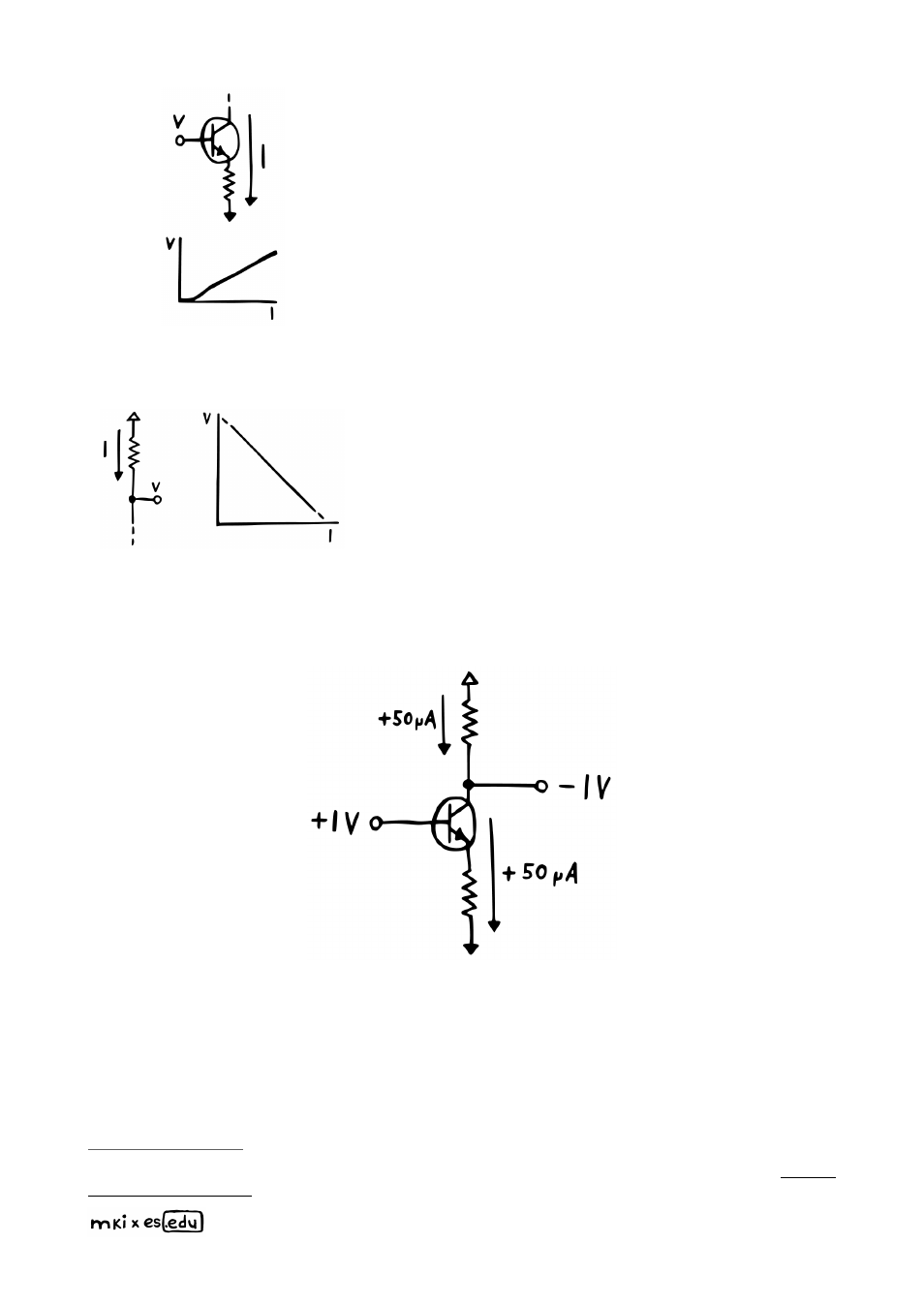Erica Synths EDU DIY Wavefolder Eurorack Module Kit User Manual
Page 9

So when the components are paired up, we can see
that their behaviors are clashing: while the transistor
wants to ramp up its current throughput exponentially,
the resistor only allows for a linear increase.
This means that the resistor is the bottleneck in our
system: it throttles the transistor.
So for a given base
voltage, the current flowing through transistor and
resistor will be (almost) the same as the current
flowing through just the resistor with the base
voltage applied across it
. I say „almost“ because
activating the transistor eats up a small but fixed
amount of current –
so it will always be a little bit lower.
Now let’s look at the upper part of our amplifier/
wavefolder – which is just a single resistor connected to
the positive rail.
That resistor serves the exact
opposite purpose: convert current into voltage
. It
works like this: the more current we pull through the
resistor, the more the voltage below it will drop.
If we put this together with the lower half now, it should become clear why the voltage at
the collector almost mirrors the voltage at the base. Because for every volt added to the
base voltage, we push an additional 50
μ
A through the bottom resistor.
Which, in turn, means that we have to pull that current through the top resistor.
And
because that resistor is of the same value as the one at the bottom, the voltage
below it will drop by exactly 1 V
. There are two caveats here, though. First, the absolute
collector voltage will be a small but fixed amount higher than the base voltage.
You can try this chapter’s circuit in a simulator. I’ve already set it up for you right here:
–
you can change all values by double clicking on components.
9
